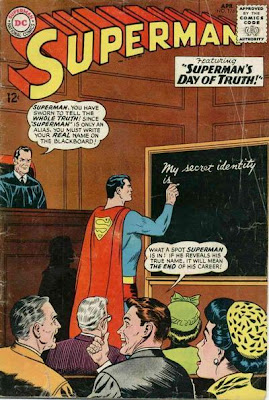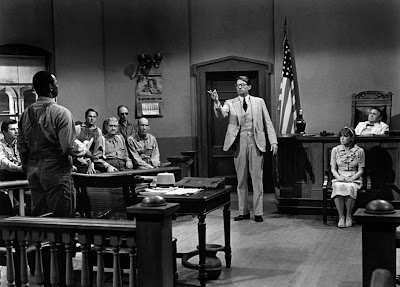With summer in full swing and extreme temperatures being felt across the nation, we thought it would be an opportune time to remind those who would seek refuge from the heat in an above-ground or shallow pool to remember NOT TO DIVE! Without fail, news stories abound every year about tragic accidents and injuries that occur when people cannot resist the temptation to dive head-first into the water, either without knowing or simply disregarding its depth. One
study reported by ABC News / Health in August of 2008 found that 6,500 adolescents alone ended up in emergency rooms each year for diving-related accidents, averaging one injury per hour. Plaintiff Jennifer
Sheehan, while not among the adolescent group, is now acutely aware of the life-long consequences that can result from failing to pay attention to the
multiple warnings that were posted on and in an above-ground pool regarding the danger of diving into shallow water.
In the case of Sheehan v. The North Am. Mkting. Corp., —F.3d—-, 2010 WL 2598390 (1st Cir. June 30, 2010), Plaintiff brought a products liability action in Rhode Island against a swimming pool seller and manufacturer for negligence, strict liability, and breach of express and implied warranties, seeking to recover damages for injuries that she sustained after attempting to dive into an above-ground pool holding only 3 1/2 feet of water. As might have been anticipated, Plaintiff broke her neck, rendering her a quadriplegic. She claimed in her lawsuit that the pool was defective in its design. The lower court granted summary judgment to the defendants on the grounds that both Plaintiff’s proof of proximate cause was unduly speculative and that she assumed the risk of serious injury when she attempted the dive. The Plaintiff appealed to the First Circuit Court of Appeals. While the Court wavered on the issue of whether Plaintiff had set forth sufficient evidence in order to reach a jury as to proximate cause, the Court could not look beyond Plaintiff’s own actions in assuming the risk of her injuries.
The accident occurred on August 8, 2002, when Plaintiff was 32 years old. She and a friend had spent the afternoon at a restaurant and beach club, where they proceeded to have mixed drinks, beer and shots of tequila, before returning to the home owned by Plaintiff’s friend. At the home was an above-ground swimming pool that was 18 feet in diameter and only 4 feet high, holding water at a level of 3 1/2 feet. The pool was not surrounded by any decking, but only had a ladder over the edge of the pool that was used for entry and exit. The top perimeter of the pool was covered by a flat piece of aluminum coping that was approximately 6 1/2 inches wide and that served to connect the pieces of the pool wall and to prevent damage to the top surface of the wall. There was no dispute that it was not intended for standing or diving.
The pool actually contained four warning signs, one located on the coping by the ladder, two identical warnings located just below the coping and above the water line inside of the pool at various distances from the ladder so that they were visible to people within the pool, and additional warnings on each of the three slip-resistant ladder treads on the outside of the pool. The warnings all contained bold capital letters in red or black with some variation of the words “DANGER,” “SHALLOW WATER,” and “NO DIVING.” After playing in the pool for about 30 minutes, Plaintiff hoisted herself up into a sitting position and then to a standing position along the coping. She stood there for about 20 seconds before performing a shallow dive in which she aimed across the pool rather than downward. Plaintiff successfully completed the dive and admitted during her deposition that she knew that diving into shallow water could be dangerous because she could hit her head on the bottom. However, Plaintiff added that, under the circumstances, she believed that the only danger she was facing was scraping the bottom of the pool based on the manner in which she chose to dive. She also denied ever hearing of anyone getting hurt from diving into shallow water. Plaintiff’s friend jokingly scolded Plaintiff about her ability to read the warning signs, prompting them both to laugh.
Although Plaintiff was lucky during her first dive, her luck did not last when she attempted a second dive. Plaintiff followed the same routine in pulling herself up onto the coping. This time, however, Plaintiff lost her balance as she was attempting the dive, causing her to enter the pool at a steep angle, striking her head and causing a burst fracture of the C5 vertebra. Although Plaintiff denied feeling impaired from the multiple drinks that she had consumed before swimming, her blood alcohol level was estimated to have been between 0.169% and 0.178% at the time of the accident, which would result in outward signs of intoxication, including staggered gait, impaired vision and decreased reaction times.
Although the Court addressed Plaintiff’s alternative theories regarding proximate causation (that the coping was unstable and too narrow, such that she lost her balance, or, alternatively, that the coping should have been designed to prevent anyone from standing on it altogether), it ultimately elected not to resolve the difficult causation questions and to resolve the case solely on the grounds of assumption of the risk. Plaintiff argued that there remained genuine issues of material fact as to her appreciation of the risk of diving and that such disputes ordinarily involved questions of subjective knowledge that should be resolved by a jury. Here, however, the Court reiterated the often-repeated rule that, if the facts suggest only one reasonable inference, the issue becomes a question of law for the judge. Moreover, as to the risks associated with diving into shallow water in particular, the Court ruled that the activity is akin to those types of activities as to which no adult will be believed if he or she says that she did not know or understand the risks, a position reflected in the Restatement (Second) of Torts §496D, cmt. d. For Rhode Island, protestations of ignorance from an adult regarding the risks of diving into shallow water are deemed not believable. Rather, the danger of diving head-first into shallow water in an above-ground swimming pool was, or should have been, obvious to a 32 year-old woman of normal intelligence.
Plaintiff further could not avoid the outcome by arguing that the only risk that she subjectively considered was that she might scrape the bottom of the pool based on the way that she intended to dive. Where a person is presumed to know the risks of dangerous conduct, that person is charged with knowing all of the ordinary risks associated with the conduct. Plaintiff could not claim to have assumed only the risk of a perfectly executed shallow water dive. Further, Plaintiff’s argument that her intoxication should be taken into consideration was also rejected. She could cite to no law to support her position in that regard. A person who voluntarily becomes intoxicated is held to the same standard as if she were sober.
Based on the above, the First Circuit affirmed summary judgment in favor of the defendants. Although we can presume that people are aware of the risks of diving into shallow water, let this serve as an additional warning nonetheless.






















